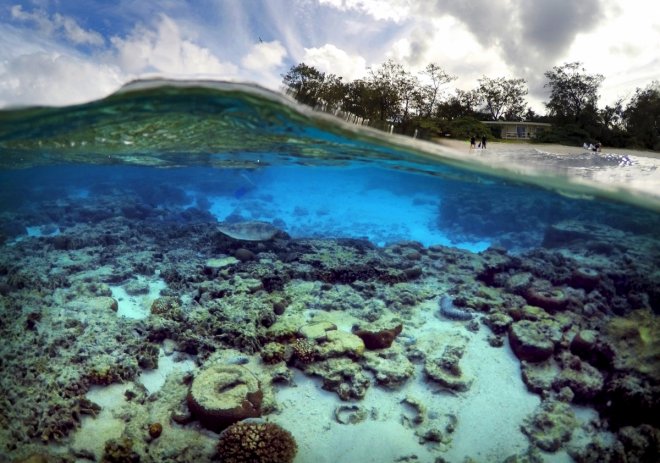
A recent study, published on Wednesday in the journal Nature, has revealed that Australia's most scenic Great Barrier Reef is fading at catastrophic rates and global warming is one of the major reasons for such a heat-induced bleaching of the reef. Scientists believe that climate change and rising sea temperatures are rapidly killing parts of the Great Barrier Reef.
After six hours of thorough inspection, the Great Barrier Reef Marine Park Authority and researchers from the Australian Institute of Marine Science have found out that bleaching is occurring in the central park of the park. Sean Connolly, program leader of a government-funded coral reef center at James Cook University, Queensland that almost 50% of the reef is now "extremely" bleached and 91% shows at least some signs of bleaching.
The vibrant colors, which draw thousands of tourists to the Great Barrier Reef every year, are now fading away because of the rapid rise in water temperatures. The experts believe that the coral reef will get completely bleached in a few more years leaving behind a dull pallor.

"Coral cover [on the Great Barrier Reef] has halved over the last 27 years," Connolly told CNN. "[In the last three decades] coral cover went from 28% to 13%. Preliminary estimates [from last year's disaster] are saying we've lost half that amount again. To have that kind of mortality on that kind of scale is unprecedented," he added.
Scientists explain that coral bleaching occurs when the water temperature heats up, with the living and breathing coral then expelling what's called 'zooxanthellae' — an algae which essentially helps the coral feed itself. Once these algae is released by the coral, the core of the coral is exposed, which is what can be described as 'the coral's bright white skeleton.'

Dr. Neal Cantin from the Australian Institute of Marine Science (AIMS) said that the recurrence of widespread coral bleaching in back-to-back summers indicated there was not enough time for the corals to fully recover from last year's extreme heat event. "We are seeing a decrease in the stress tolerance of these corals. This is the first time the Great Barrier Reef has not had a few years between bleaching events to recover. Many coral species appear to be more susceptible to bleaching after more than 12 months of sustained above-average ocean temperatures," he added.
The coral reef disaster that took place last year was the third major mass coral bleaching of the Great Barrier Reef on record. Scientists suspect that a fourth one is already underway in less than a year now.
The Great Barrier Marine Park Authority is currently conducting aerial surveys of the reef. The authorities are working closely with AIMS to develop standardised operating practices to ensure a consistent approach to the scientific assessment of the extent and impact of bleaching events. The Great Barrier Reef damage has been going viral on social media sites with the hashtag #GreatBarrierReef.















